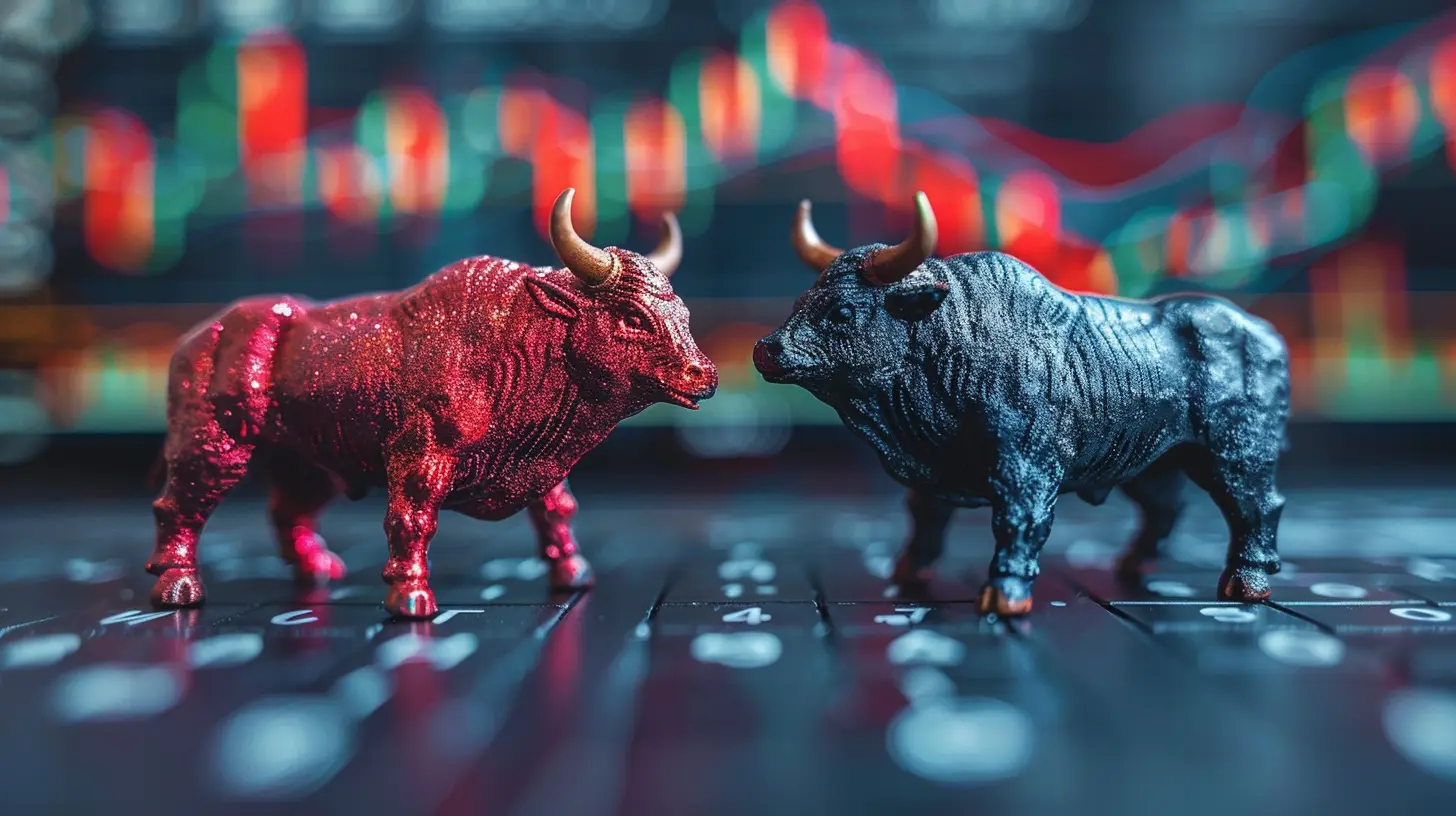Growth Stocks vs. Value Stocks: When to Make the Switch
9 June 2025
When it comes to investing, one big decision every investor eventually faces is whether to bet on growth stocks or value stocks. It’s like choosing between riding a rocket or planting a tree. One aims for fast, sky-high returns, the other grows steadily and reliably. But here’s the million-dollar question: when should you switch from one to the other?
Let’s break it down in simple terms—no jargon, just clear thinking and solid insights. And if you’ve been wondering whether your portfolio needs a fresh coat of paint (or a full renovation), this guide is for you.
What Are Growth Stocks?
Growth stocks are like the hot new startups in town. They’re companies expected to grow faster than the market average, and most of their profits (if they have any) are plowed right back into the business to fuel further expansion.Think of companies like Tesla, Amazon (in its earlier years), or Zoom. These are firms that promise explosive potential. They're all about innovation, disruption, and grabbing market share.
Key Features of Growth Stocks:
- Revenue and earnings (if any) are growing rapidly.- High price-to-earnings (P/E) ratios.
- Often don’t pay dividends because profits are reinvested.
- High volatility—prices can swing wildly.
- Popular in booming markets or low-interest-rate environments.
Simply put, growth stocks are the flashy sprinters in your investment track meet. They can deliver mind-blowing gains—but they aren’t for the faint-hearted.
What Are Value Stocks?
Value stocks are the slow and steady types. These are companies whose stock prices don’t reflect their actual worth. For whatever reason—maybe a bad quarter, a sluggish sector, or just investor boredom—they’re selling at a discount.Imagine buying a $100 bill for $70. That’s value investing in a nutshell.
Famous value names? Coca-Cola, IBM, Johnson & Johnson. These are mature companies with predictable cash flows, steady dividends, and long-term staying power.
Key Features of Value Stocks:
- Lower P/E ratios (they’re cheap compared to earnings).- Regular dividend payments.
- Less volatility = more stability.
- Outperform in bear markets or economic slumps.
- Often found in traditional industries (finance, utilities, consumer staples).
Value stocks are like the wise old turtles in your portfolio—slow-moving but dependable.
Growth vs. Value: The Core Difference
The tug-of-war between growth and value is really about potential vs. stability. Do you want to take a chance on the next Amazon? Or do you prefer reliable names that won’t give you a heart attack with every market swing?Let’s compare them side by side:
| Feature | Growth Stocks | Value Stocks |
|--------|----------------|--------------|
| Risk | Higher | Lower |
| Reward | Potentially higher | Modest but stable |
| Dividends | Rare | Often paid |
| Market Conditions | Thrive in bull markets | Shine in downturns |
| Investor Type | Aggressive, risk-tolerant | Conservative, income-focused |
How Market Conditions Affect the Game
Here’s the thing—there’s no one-size-fits-all. Whether growth or value stocks outperform often depends on the broader economic environment.Bull Markets = Growth’s Time to Shine
In booming economies, interest rates are low, consumer confidence is high, and investors are more willing to chase future earnings. That’s the perfect cocktail for growth stocks.Think about the 2010s—a bonanza for tech stocks. You’d have been laughing all the way to the bank if you’d gone heavy on growth during that decade.
Bear Markets or Rising Rates = Value’s Comeback
But what happens when inflation shows up, interest rates rise, or recessions loom? Suddenly, speculative bets lose their charm. Investors flock to safer, income-generating value stocks.In 2022, for example, high-flying tech stocks took a beating, while oil companies and defensive sectors (aka value territory) saw a revival.
When Should You Consider Switching?
Here’s where it gets real. Timing the market perfectly is nearly impossible, but there are solid signals that suggest when it might be time to rebalance your portfolio from growth to value—or vice versa.1. Interest Rate Trends Are Changing
Rising interest rates tend to hurt growth stocks more. Why? Because higher rates reduce the present value of future earnings—something growth stocks rely heavily on.So, if central banks start hiking rates aggressively (like the Fed did post-2020), it might be a cue to lean more into value.
⚠️ Pay Attention To: Fed announcements, inflation numbers, and bond yields.
2. Economic Cycles Are Shifting
If we’re heading into a recession, investors typically flee to safety. And safety = value. On the flip side, when the economy’s heating up, it’s growth’s time to sparkle.Look at leading indicators: GDP growth rates, job reports, consumer spending trends.
3. Growth Stocks Look Overvalued
Sometimes, the hype is just too much. If growth stocks are trading at sky-high multiples and value stocks look like a bargain, it might be time to rebalance.Even the best companies can become poor investments if you pay too much for them.
4. You’re Getting Nervous About Risk
Let’s be honest—volatility can wear you down. If you’re losing sleep over every dip in your portfolio, adding steady value stocks can bring peace of mind.Age is also a factor. A 25-year-old investor might stomach a 30% drop better than someone nearing retirement.
Mixing It Up: Why Not Have Both?
Here’s a wild idea—why not have both in your portfolio?A balanced mix of growth and value stocks can give you the best of both worlds. While growth stocks fuel potential upside, value stocks act as a cushion during downturns.
A popular method? The “core-satellite strategy”. Keep a stable core of value or index funds, and add growth stocks as satellites for extra punch.
Another route is using ETFs. You can invest in:
- VUG (Vanguard Growth ETF)
- VTV (Vanguard Value ETF)
- Or a balanced fund that blends both
What the Pros Say
Even legendary investors have their preferences—but also acknowledge the need for balance.- Warren Buffett? The king of value investing, but he’s also owned Apple.
- Peter Lynch? Loved growth—even coined "growth at a reasonable price" (GARP).
- Ray Dalio? Advocates for diversification above all else.
The takeaway? Don’t box yourself into one style. Be flexible. Markets evolve. So should your strategy.
Red Flags That It’s Time to Switch Strategies
Let’s say you’ve been holding mostly growth stocks. Here are some danger signs it might be time to pivot:- Your portfolio is dripping red while value indices stay positive.
- The P/E ratios in your holdings are astronomical.
- The Fed is signaling more rate hikes.
- You're approaching retirement and need more stability.
On the flip side, if your value stocks are underperforming for years while tech and innovation thrive, it might be time to skew toward growth.
Final Thoughts: Let Your Goals Lead the Way
So, when should you make the switch from growth to value (or vice versa)? The real answer boils down to YOU:- What’s your risk tolerance?
- What are your investment goals?
- What's your timeline?
If you're young, aggressive, and chasing high returns, growth might suit you. If you're nearing retirement or prefer a smoother ride, value could be your best friend.
The truth is, timing the perfect switch is tough. But staying informed, watching the economic signs, and keeping your portfolio aligned with your goals will always put you ahead.
Remember, investing isn’t about chasing the hottest trend—it’s about building wealth you can live with.
FAQs
Q: Are growth stocks riskier than value stocks?
Absolutely. They tend to be more volatile and sensitive to economic changes. But they also offer higher upside in booming markets.Q: Do value stocks always pay dividends?
Many do, but not all. Look at individual company fundamentals to be sure.Q: Can a stock be both growth and value?
Yes! “Growth at a Reasonable Price” (GARP) stocks try to blend both worlds. Think of them as the hybrid sedans of investing.Q: Is one better than the other in the long term?
Historically, both have had periods of dominance. Over very long stretches, value has slightly outperformed—but growth has dominated the past decade.all images in this post were generated using AI tools
Category:
Stock AnalysisAuthor:

Harlan Wallace
Discussion
rate this article
3 comments
Finn Bailey
Thank you for this insightful article! Your analysis of growth versus value stocks provides a valuable perspective for investors. It’s a timely reminder to reassess our strategies based on market conditions.
June 23, 2025 at 12:46 PM

Harlan Wallace
Thank you for your kind words! I'm glad you found the article helpful in navigating investment strategies.
Kassandra McAdams
Oh, because switching stocks is as easy as changing your socks, right? Just toss some darts at a board and pick your winners! Who needs a strategy when you have sheer luck?
June 18, 2025 at 12:03 PM

Harlan Wallace
Investing does require strategy, but sometimes timing and market conditions can feel like luck. It’s important to analyze both growth and value stocks to make informed decisions.
Jemima Reilly
This article effectively highlights the key differences between growth and value stocks, offering valuable insights for investors. Timing the switch between the two strategies can significantly impact portfolio performance, so understanding market conditions and individual goals is crucial for making informed investment decisions. Great read!
June 18, 2025 at 3:50 AM

Harlan Wallace
Thank you for your insightful comment! I’m glad you found the article helpful in navigating the nuances between growth and value stocks.



